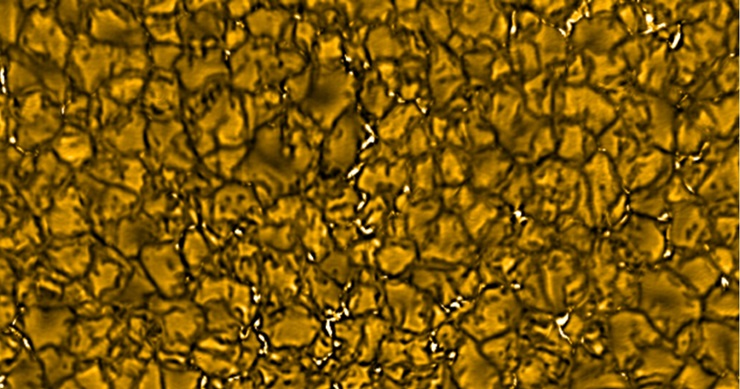Solar scientists may be closer to understanding why the sun’s outer atmosphere, known as the corona, is significantly hotter than its inner layers. An international team of researchers, using the world’s most powerful solar telescope, the Daniel K. Inouye Solar Telescope in Hawai’i, has observed the sun’s magnetic field in exceptional detail. They discovered complex, snake-like patterns of energy in the sun’s lower atmosphere that could be responsible for driving energy to the outer layers.
This discovery could potentially solve the long-standing coronal heating problem that has puzzled scientists for decades. The corona, a diffuse cloud of charged atoms, can reach temperatures of over 1.8 million degrees Fahrenheit, while the sun’s surface is only around 10,000 degrees Fahrenheit. This contradicts stellar models which propose that a star’s heat source is nuclear fusion at its core, and that temperatures should increase towards the heart of a star. The sun’s layers seem to follow this rule until the corona is reached, suggesting an unknown mechanism is heating the sun’s outer atmosphere. The newly discovered snake-like magnetic phenomena could provide an explanation.
Previous attempts to solve the coronal heating problem focused on active regions of the sun, particularly sunspots, which are highly magnetic and transfer energy among the sun’s outer layers. However, this recent study concentrated on quieter regions of the sun. These quiet areas are covered by convective cells known as granules, which host weaker but more dynamic magnetic fields than those found around sunspots. The researchers discovered a more complicated underlying pattern, with the orientation of these magnetic fields showing a serpentine variation.
The researchers suggest that the more complex the small-scale variations in magnetic-field direction, the more likely it is that energy is being released through a process known as magnetic reconnection. This process, where two magnetic fields pointing in opposite directions interact and release energy, could contribute to heating the sun’s atmosphere. The research was published in The Astrophysical Journal Letters.
Key Takeaways:
- Scientists using the Daniel K. Inouye Solar Telescope in Hawai’i have discovered complex snake-like patterns in the sun’s magnetic field, which could explain why the sun’s outer atmosphere is hotter than its inner layers.
- The discovery challenges the traditional stellar model that suggests heat should increase towards the core of a star, indicating an unknown mechanism heating the sun’s outer atmosphere.
- Rather than focusing on active regions of the sun like sunspots, the researchers studied quieter areas and found that the more complex the small-scale variations in magnetic-field direction, the more likely it is that energy is being released, contributing to atmospheric heating.
“Solar scientists could be one step closer to solving a lingering mystery about the sun: why its outer atmosphere, called the corona, is so much hotter than the layers below it.”
More details: here


Leave a Reply